Discovering Paris Through Amélie’s Eyes: Exploring the City’s Charm via Cinematic Landmarks
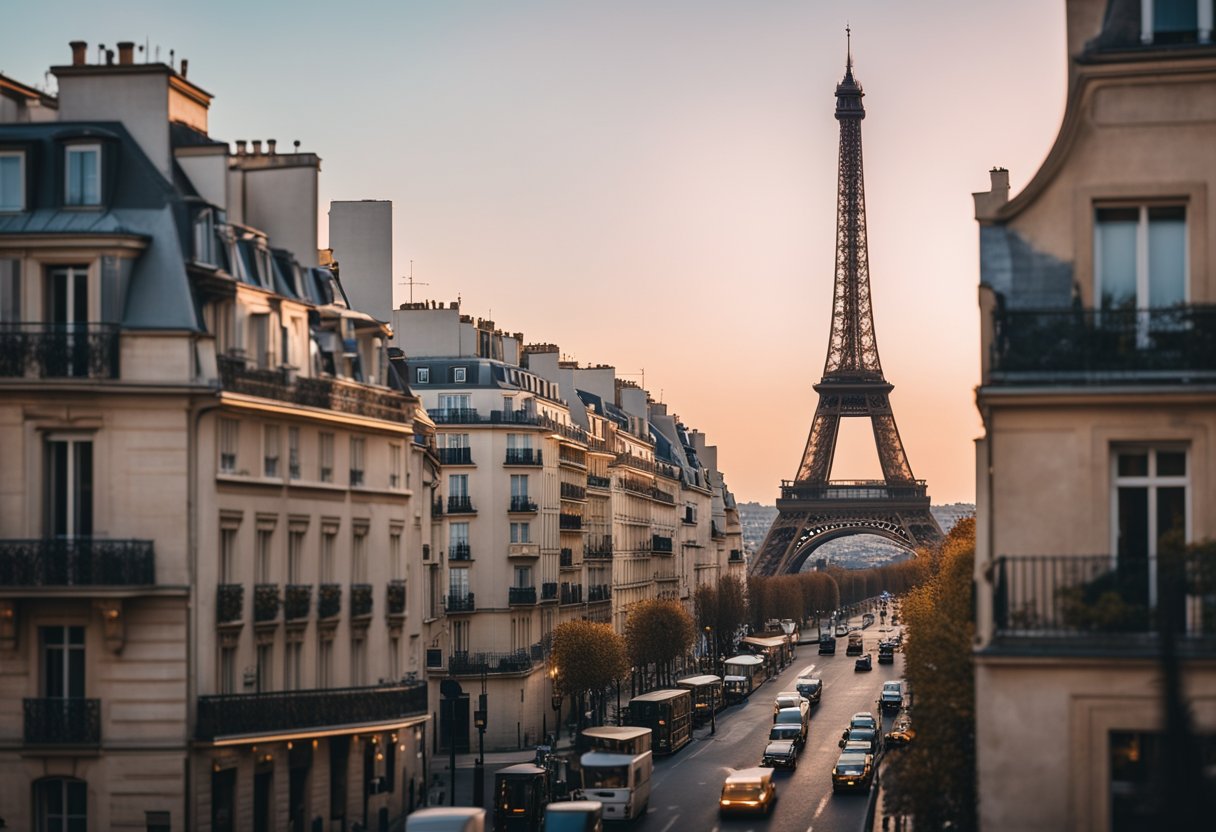
Updated On: April 24, 2024 by Maha Yassin
As portrayed through the lens of the enchanting film “Le Fabuleux Destin d’Amélie Poulain,” Paris offers a view of the French capital that is as whimsical as it is heartwarming. Audrey Tautou’s portrayal of the titular character brings to life the nuances of French romantic comedy, weaving loneliness and love with Paris’s vibrant colours and emotions. This cinematic journey invites us to see the city from a fresh perspective, where even the most mundane aspects of everyday life are infused with a certain ‘je ne sais quoi’ that is quintessentially French.
As we journey through the quaint streets and iconic locations that Amélie frequented, such as the markets of Montmartre or the picturesque Canal Saint-Martin, the film transforms the architecture and cobblestones of Paris into characters in their own right. The international success of this French movie has not just bolstered the esteem in which French cinema is held. Still, it has also made a lasting imprint on tourism, encouraging viewers to experience the French flavours and romantic ambience for themselves. The legacy of Jean-Pierre Jeunet’s direction resonates with every step, capturing the quintessence of Parisian charm that has enamoured audiences worldwide.
Chronicle of a French Tale
This section explores the charming narrative and enchanting protagonist of ‘Le fabuleux destin d’Amélie Poulain’.
Storyline and Plot
‘Le fabuleux destin d’Amélie Poulain‘, known simply as Amélie, unfolds as a captivating French romantic comedy that takes us on an expedition through the whimsical streets of Paris. Its plot centres on Amélie Poulain, portrayed with a tender nuance by Audrey Tautou, a young woman whose sheltered childhood and vibrant imagination drive her to seek the simple joys of life. As her story progresses, she crafts intricate schemes to instil happiness in others, inadvertently embarking on her own quest for love and human connection.
Character Study: Amélie Poulain
Amélie is an intricate portrayal of solitude intertwined with a longing for connection. Audrey Tautou breathes life into the character, delivering a performance that perfectly captures the essence of a dreamer who finds solace in fleeting moments of joy and the pleasures of everyday Parisian life. Alongside Amélie, the movie introduces us to Nino, a curious spirit with a similar penchant for the peculiar. Their romance blossoms within a narrative that adeptly navigates the intricacies of loneliness and intimacy, presenting a heartfelt musing on the nature of human connection within the bustling metropolis of Paris.
Envisioning Paris Through Jean-Pierre Jeunet’s Lens
In Jean-Pierre Jeunet’s ‘Amélie’, Paris is not just a backdrop but a character in its own right, brought to life through distinctive cinematography and a masterful use of colour.
Artistic Cinematography
Jeunet crafts each frame with meticulous precision, turning the ordinary streets of Paris into a whimsical tableau. He creates a visual symphony that captures the city’s romance by using iconic landmarks like the Sacré-Cœur and the winding Rue Saint-Vincent. The Abbesses metro station serves as more than a transit point; it’s a gateway into Amélie’s world, where every detail is infused with purpose and beauty. Jeunet’s camera dances through these streets, inviting us to explore corners of Paris that echo with stories and history.
The Role of Colour in Amélie
Colour in ‘Amélie’ is a language unto itself. Jeunet utilizes a palette dominated by yellows and reds, evoking a sense of warmth and intimacy throughout the film. These hues saturate the streets of Paris, turning quaint cafes and bustling marketplaces into scenes from a dream. It’s not just a stylistic choice but an emotional one, as these colours amplify the nostalgic and fairy-tale quality of the film, with the score by Yann Tiersen deepening the connection. In this cinematic Paris, every shade is chosen for its ability to evoke emotion and narrate without words.
Iconic Locations in Amélie’s Paris
In the film “Amélie,” Paris serves not just as a backdrop but as a character in its own right. We discover the charm and romance of the city through the protagonist’s adventures. The following subsections will take you through some emblematic venues that brought this story to life.
Café Culture: Café des 2 Moulins
The Café des 2 Moulins is where Amélie Poulain, the film’s whimsical protagonist, works as a waitress. Located in the Montmartre district, the café’s name translates to “Cafe of the Two Windmills,” referencing the nearby Moulin Rouge and Moulin de la Galette windmills. Today, it remains a popular spot for locals and visitors looking to capture a piece of the film’s magic.
The Montmartre District
Montmartre is at the heart of the film’s narrative, an area known for its bohemian spirit and artistic heritage. This historic district’s cobblestone streets and quaint buildings were the playground for Amélie’s daydreams and schemes. The charming Maison Collignon grocery and the bustling Rue Lepic featured prominently, immersing viewers in the quintessential Montmartre experience.
Sacré-Cœur Basilica and Its Surroundings
The Sacré-Cœur Basilica stands proudly atop Montmartre Hill, offering panoramic views over Paris. Not just a monumental church, the Sacré-Cœur and its surroundings represent the spiritual and cultural zenith of Montmartre. The Abbesses Metro Station, one of the few original Art Nouveau entrances left, leads visitors directly to the area’s heart, inviting them to explore further.
The Soundtrack of the City
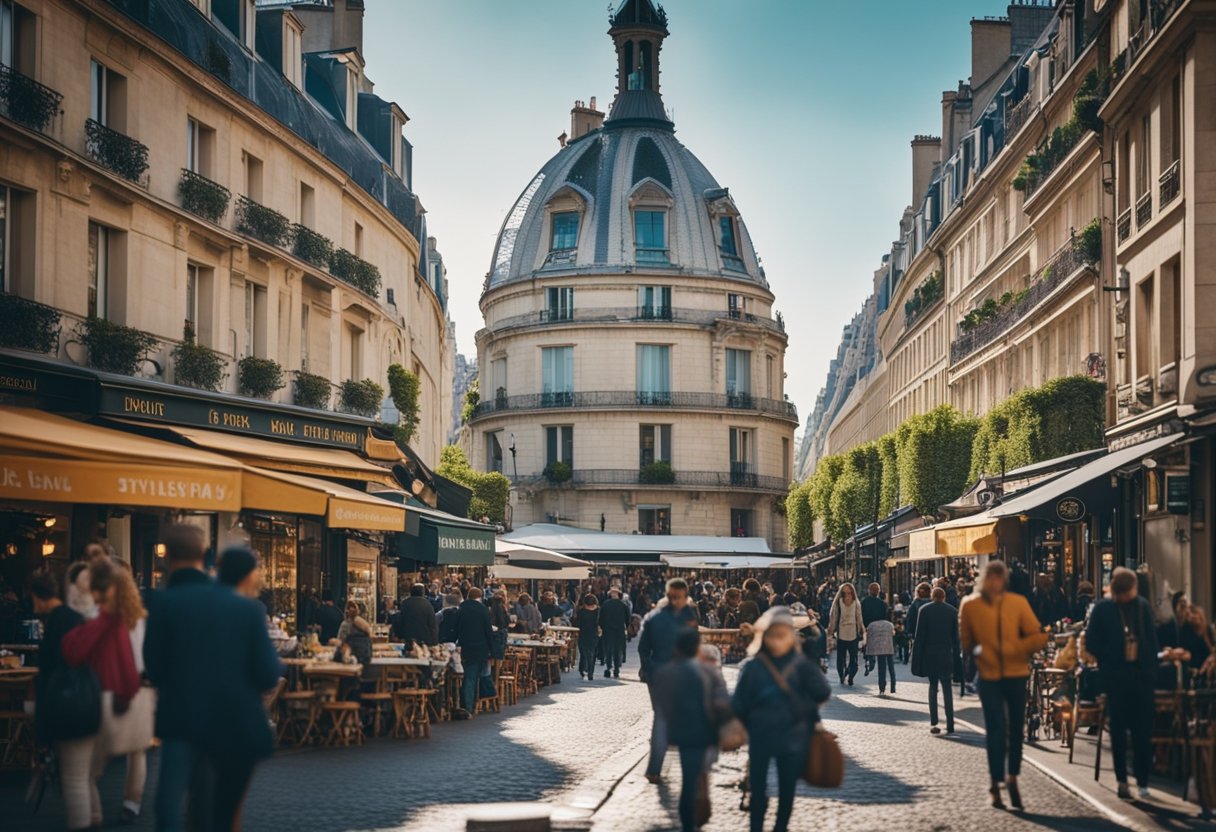
The soundscape of Paris in Amélie is as integral to the film as its visuals, with Yann Tiersen’s composition setting the mood and enriching the atmosphere that audiences experience.
Yann Tiersen’s Musical Contribution
Yann Tiersen crafted a soundtrack that weaves through the narrative of Amélie, shaping the film’s mood with a unique blend of classical and folk melodies. His use of instruments like the accordion and piano evokes the spirit of Paris, mirroring the bustling streets and serene moments that make up the city’s rhythm.
Tiersen’s compositions form an auditory backdrop that complements the on-screen story and becomes a character of its own. Each note and melody strengthens the film’s atmosphere, transforming the viewer’s experience into a magical exploration of Paris through Amélie’s eyes.
Paris: A Character Itself

In our cinema-inspired journey through Paris, it’s evident that the city isn’t just a backdrop—it’s a character in its own right. The Montmartre district stands out, encapsulating the essence of Parisian charm and becoming as iconic as any lead actor. Its cobblestone streets, lined with artists and quaint cafés, are instantly recognisable.
Embracing the ambience that Amélie made famous, Café des Deux Moulins finds itself a place of pilgrimage for film enthusiasts. The unassuming façade houses a world where reality intertwines with cinematic fantasy, coloured by the stories of those who visit and remember the film’s charming waitress.
Let’s not forget the Sacré-Cœur, an architectural masterpiece that serenely watches over the city from its vantage point atop Montmartre. This basilica, with its Romano-Byzantine influences, stands as a testament to religious devotion and the city’s timelessness.
Surrounding it, historical buildings tell silent tales of a Paris that has evolved while holding fast to its artistic roots. The natural inclination here to treat every landmark with reverence indicates our respect for a city that continues to inspire.
As we wander through Paris with the notion of Amélie’s perspective, one realises that each building, each church, and each view forms an integral part of the narrative tapestry. Paris is a character that breathes life into stories with its distinctive architectural landmarks and the intrinsic romance it has nurtured for centuries. Woven through each scene, the spirit of Paris is as vibrant and vital as any character brought to life on the silver screen.
French Flavours and Amélie’s Taste
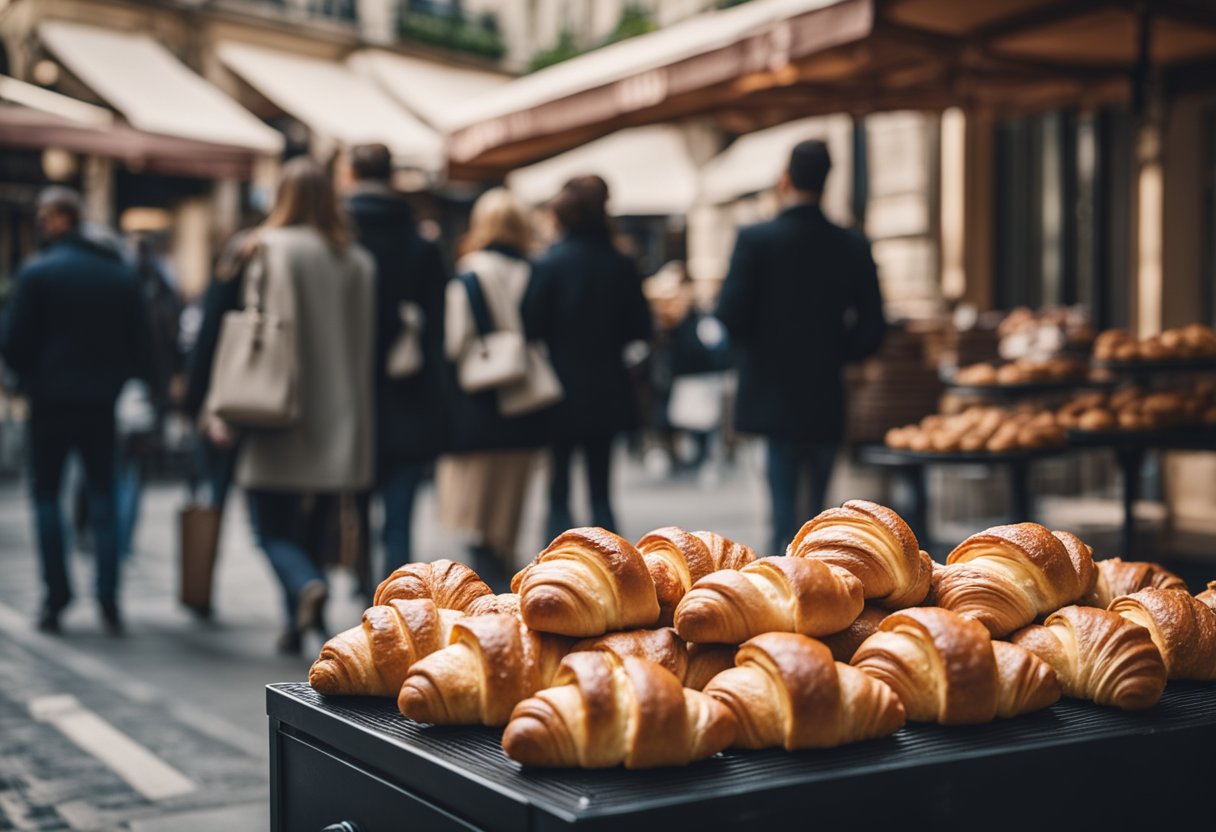
Amélie’s cinematic journey through Paris is as much an adventure for the palate as the eyes. We get to explore quintessentially French tastes and the vibrant cafe culture that Amélie enjoys in her day-to-day life.
Culinary Encounters with Crème Brûlée
Crème brûlée is a beloved French dessert, its name evoking the delightful contrast between the burnt sugar top and the lush, creamy custard beneath. Amélie takes pleasure in cracking the caramelised top, a simple act that is a metaphor for finding joy in the little things. This dessert, often found in the bustling cafés of Paris, represents a slice of the city’s gastronomic heritage.
Montmartre’s Eateries and Brasseries
In Montmartre, the air is fragrant with the aromas of rich French cuisine emanating from the local eateries and brasseries. These traditional establishments capture the essence of Parisian dining, from the clink of wine glasses in a toast to the buzz of convivial conversation. For those seeking to follow in Amélie’s footsteps, visiting the Café des Deux Moulins, where she worked as a waitress, is a must. Another notable spot is Chez Ali, offering an authentic experience that adds to the film’s texture and Montmartre’s real-life culinary tapestry.
From Fiction to Reality: Amélie’s Impact on Tourism
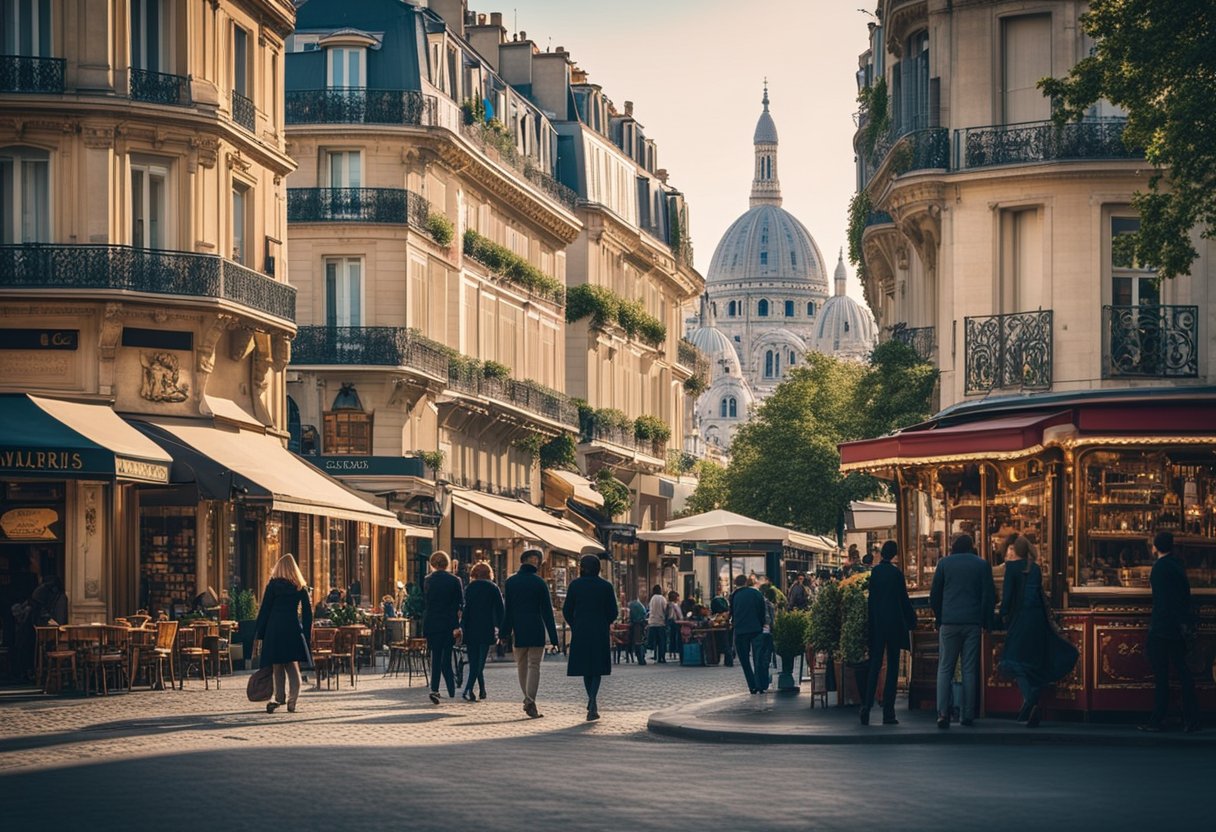
The whimsical tale of Amélie Poulain has captured hearts and sparked a tourism phenomenon, inviting travellers to step into the film’s enchanting Parisian backdrop. We examine the growth in location-based tours and the transformative effect on businesses in the quaint district of Montmartre.
Location-Based Tours
Visitors to Paris can now immerse themselves in the film’s universe, embarking on tours that trace the steps of the beloved character. The culture trip has become a staple for many, as tour guides whisk fans to iconic settings like the Café des Deux Moulins, where Amélie worked as a waitress, and the charming Place des Abbesses. Itineraries are often fully tailored to ensure a magical journey through Amélie’s world, offering both mainstream and authentic local experiences. Acting as travel experts, guides provide insights into each location’s role within the film and its real-world significance.
The Amélie Effect on Montmartre Businesses
Since Amélie’s release, the businesses featured in the film have enjoyed an incredible surge in popularity. The Café des Deux Moulins has become a pilgrimage site for fans, while nearby shops have seen a buoyant flow of visitors eager to capture a piece of the film’s charm. This phenomenon has led to a ripple effect, benefiting local traders and contributing to a planet-friendly approach to tourism by highlighting the importance of supporting community businesses. Additionally, features like the funfair below Sacré-Cœur and the park known as Le Passe-Muraille, boasting the fabled statue of the man walking through walls, have become integral stops on this cinematic voyage. There’s an evident push towards net zero travel experiences, where discoveries of Montmartre through Amélie’s adventures promote sustainable cultural exploration.
Character Analysis and Development
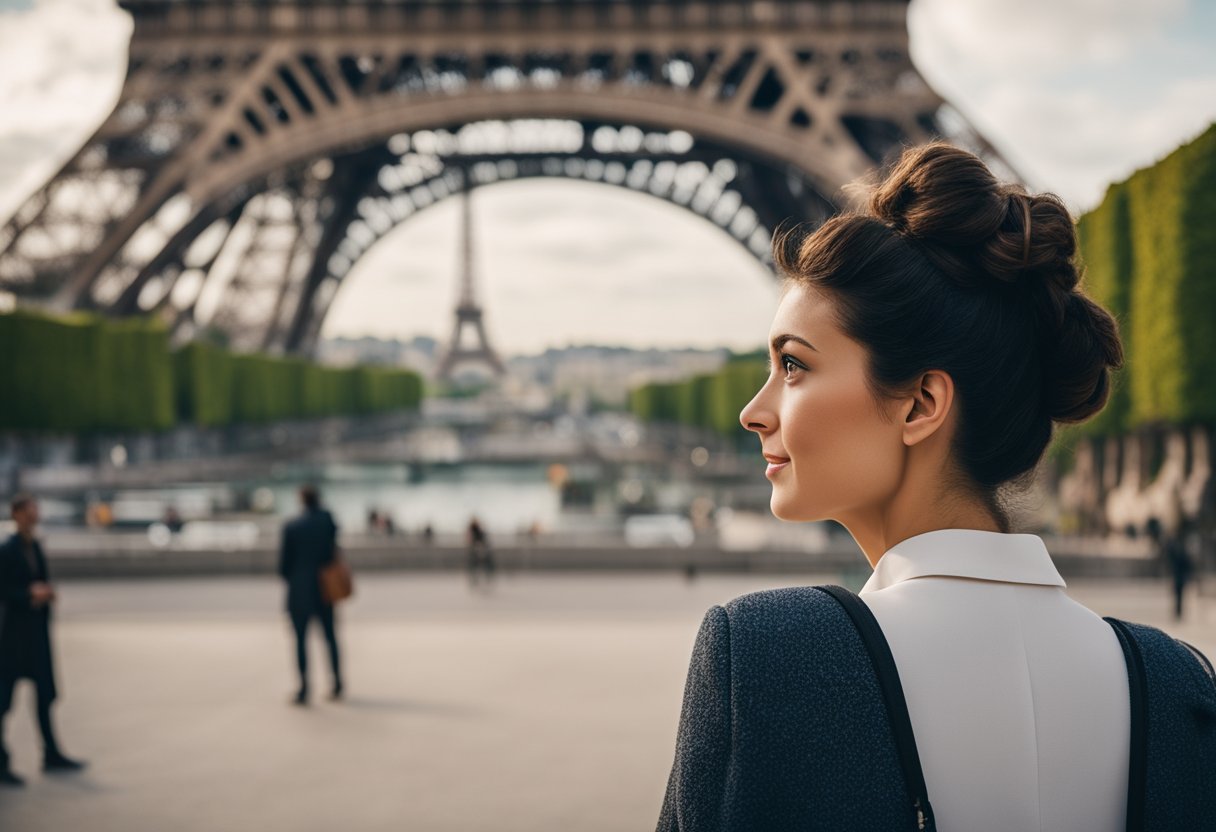
Exploring the layered dynamics of “Amélie”, we uncover the profound transformation of its characters from solitary individuals to interconnected beings within the tapestry of Parisian life.
Amélie’s Quest for Happiness
Amélie Poulain’s journey is a heartwarming tale of self-discovery and altruism. As a shy and imaginative waitress living in Montmartre, she finds joy in life’s simple pleasures – cracking crème brûlée with a spoon, skipping stones across St. Martin’s Canal, and observing the city as a flaneur à la française. Her character, which initially manifests as an innocent observer of life, evolves as she embarks on a personal mission to spread happiness to others, catalyzing her growth. This central theme is captured in critiques of the film, focusing on how Amélie’s solitude and childhood impact her later actions.
Supporting Cast: The People in Amélie’s World
The supporting characters enrich the narrative, providing a multidimensional view of community and individuality. We meet Nino Quincampoix, an eccentric collector of discarded photo booth pictures, and Georgette, a hypochondriac tobacco shop attendant. Each character represents a facet of the city’s eclectic spirit, from the obsessive to the lovelorn. Together, they form a mosaic of humanity, each undergoing transformation as they intersect with Amélie’s world. This diverse cast illustrates the range of personalities in any society and the potential for every ordinary life to experience extraordinary change.
Behind the Scenes and Making Of Amélie
In exploring the creation of Amélie, we uncover the distinct vision of Jean-Pierre Jeunet and the dedicated performances of Audrey Tautou and Mathieu Kassovitz. We also delve into the unique filming techniques that lend the film its magical realist quality.
Jean-Pierre Jeunet’s Direction
Jean-Pierre Jeunet’s unique directorial style brought a whimsical charm to Amélie. His knack for visual storytelling transformed the quaint quarters of Paris into an enchanting world. Jeunet’s approach to the film was meticulous, from selecting the perfect locations to infusing each scene with vibrant colours that enhance the narrative.
The Cast and Their Journey
Audrey Tautou’s depiction of Amélie perfectly captured the character’s quirky and benevolent nature, while Mathieu Kassovitz’s portrayal of Nino added depth and intrigue. Behind the scenes, the cast embarked on an intensive journey, embodying their characters with nuance and contributing to the heartwarming chemistry that audiences adored.
Filming Techniques and Challenges
The cinematography of Amélie is iconic, with every shot constructed to evoke the essence of Parisian charm. Challenges included capturing the bustling city while maintaining the film’s fairy-tale feel. Innovative techniques, such as using the photobooth and close-ups of vegetables, became memorable motifs contributing to the film’s unique visual language.
Exploring the Film’s Legacy
Before we dive into the specifics, let us reflect on the enduring impact of ‘Amélie’ and its significant contributions to French cinema and its ripple effects across the globe.
Critical Acclaim and Awards
Since its release, ‘Amélie’ has garnered critical acclaim and many awards. A particular highlight was the Best Film award at the European Film Awards, a testament to its quality and appeal. The film also received an impressive five Academy Award nominations, including one for Best Foreign Language Film, positioning ‘Amélie’ as a notable entry in the annals of French-language films.
Influence on French and Global Cinema
‘Amélie’ not only boosted the profile of French cinema internationally but also laid the groundwork for a refreshed perception of French-language films. Its international success sparked heightened interest in French cinematography and storytelling beyond the Francophone world. The film’s whimsical portrayal of Paris and its quintessentially French aesthetic have influenced filmmakers and creatives, prompting many to capture their narratives through a similar lens. Amélie’s legacy continues to resonate, proving that a film can transcend its national identity to leave an indelible mark on global cinema.
FAQs
Embarking on a cinematic journey through Paris with the film ‘Amélie’, we uncover treasured locations and immerse in the city’s charms, just as the movie does. Here, we address some common questions about ‘Amélie’ and its Parisian backdrop.
What are the iconic locations in Paris featured in the film Amélie?
The film showcases several iconic Parisian landmarks, including Montmartre’s Café des Deux Moulins, the Basilica of the Sacré-Cœur, and the meandering streets of its hilly neighbourhood. The protagonist’s whimsical adventures also lead us to the picturesque Canal Saint-Martin.
Which café in Paris served as Amélie’s workplace in the movie?
Amélie’s workplace is the cosy Café des Deux Moulins in Montmartre. The café’s interior retains much of its original charm as depicted in the film, making it a must-visit for fans.
In which year was the film Amélie shot?
The film ‘Amélie’ was shot primarily in the year 2000 and released the following year, capturing Paris in the delicate hues of a bygone era.
Can you identify some lesser-known spots in Paris that gained popularity after Amélie?
Lesser-known yet equally enchanting locations that gained popularity from the film include the Lamarck-Caulaincourt metro station, the charming Place des Abbesses, and the urban oasis of the Canal Saint-Martin.
How has the film Amélie influenced tourism in Paris?
The film has had a notable impact on Parisian tourism, enticing visitors to explore the city’s quieter, more whimsical corners. Tourists often seek out Montmartre and its landmarks to experience the film’s heartwarming magic in person.
Are there guided tours available that explore Paris as depicted in Amélie?
Indeed, guided tours are available for those wishing to follow in Amélie’s footsteps. These tours provide a unique perspective on the film’s shooting locations and other hidden gems prominently in the charming narrative.






